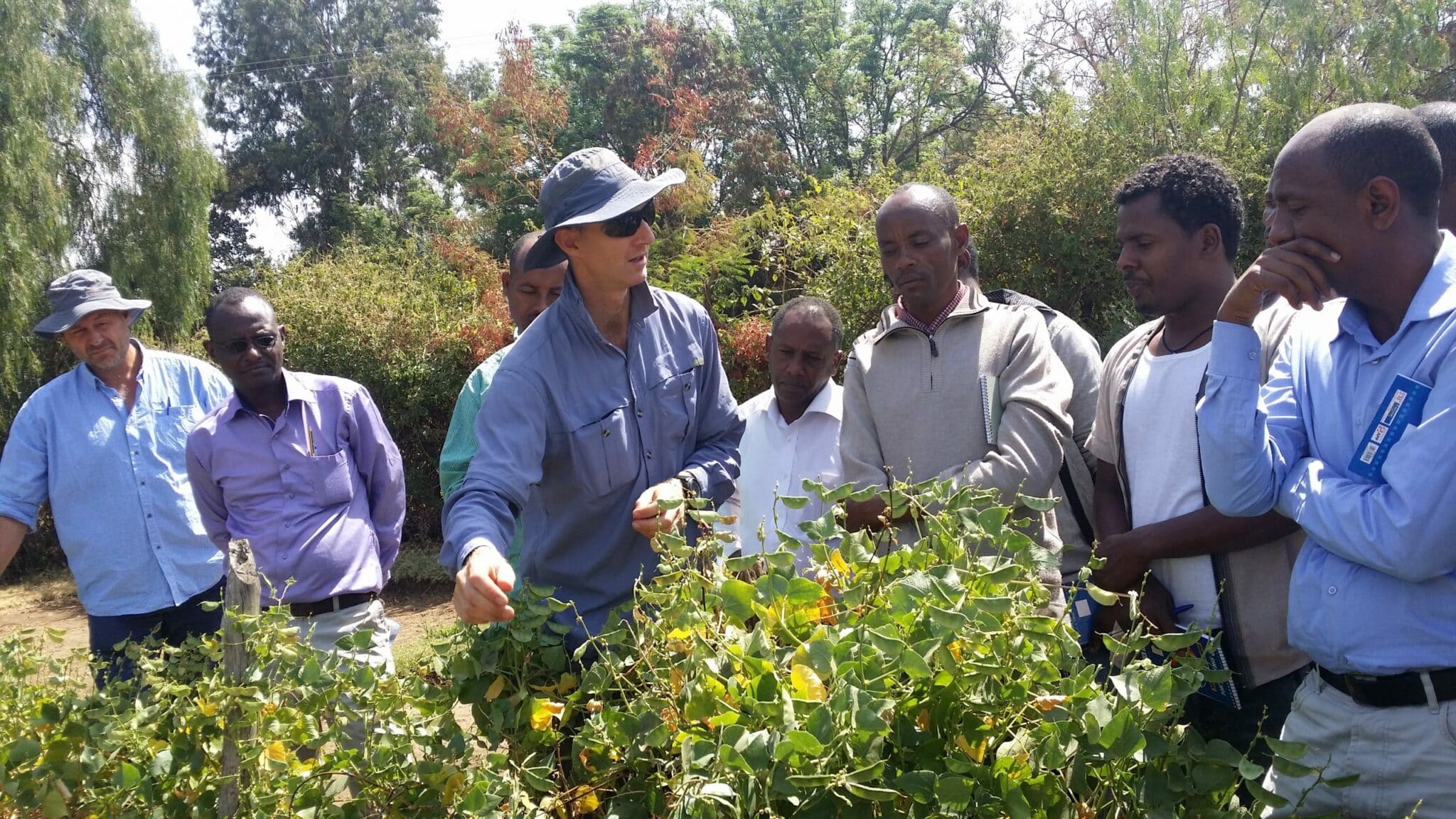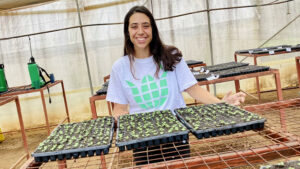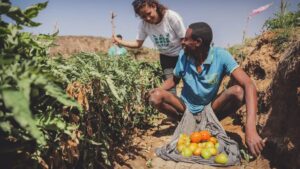Investing in the future of seeds to end poverty.
After an especially volatile year, the seed industry has the opportunity to make an impact toward reducing global poverty. It’s a goal that will require intentional investment over the coming years.
Anthony Leddin, Australian plant breeder for Valley Seeds, believes the most important thing to remember is that nations struggling with hunger and poverty need a hand up, not a hand out.
“In times of famine in places like Ethiopia, for instance, overseas aid will come in and give free seed to farmers. That seed can be used for planting, but also for eating, and it guts the market for local farmers trying to sell seed there, dropping wheat prices to nearly zero, not only in Ethiopia, but in countries surrounding it as well,” Leddin says.
The solution is about developing a foundation. Investments must be made in the right way in order to successfully make a difference in reducing and eliminating poverty.
Invest in Smallholder Farms
The vast majority, or about 75%, of the global agricultural land is managed by small family farmers. The Food and Agricultural Organization of the United Nations reports that 90% of family farmers operate farms that are smaller than 5 hectares.
“That’s where economy can really grow,” Leddin says.
These small-scale operations are crucial to local and regional food security, but come with many limitations.
“Factors such as limited access to information, tools, services and market hinder them to increase their profitability and income,” says Julia Harnal, Vice President Sustainability & Governmental Affairs at BASF’s Agricultural Solutions division.
Simon Winter, executive director of the Syngenta Foundation for Sustainable Agriculture, says of the 600 million small scale farmers in the world, only about 10% of those are making a decent living.
“The rest are very vulnerable to volatile weather and other associated hazards like pests, diseases and flooding, all of which are getting worse as climate change worsens,” Winter says.
Invest in Public-Private Partnership
Partnerships are essential to give smallholder farmers access to high quality seed. Public investment has been declining in most of the world, which private investments and capability continue to grow.
Together with CINI (Collectives of Integrated Livelihood Initiatives), BASF is supporting a project with tribal small landholders in the state of Odisha.
“India is a country of small landholders where growers traditionally have not been able to be farming entrepreneurs,” Harnal says. “Together with the farmers, we transformed their agricultural model in such a way that they now grow and sell vegetables in a way that is scalable, sustainable and creates a lasting impact in the community.”
There are similar projects and partnerships with other organizations in various stages across the globe. Winter says public-private partnerships are one of the Syngenta Foundation’s main areas of focus.
“We’re able to use improved varieties from breeders within the CGIAR system, as well as universities, then work with local seed companies to produce the improved seeds and distribute them directly to farmers,” Winter says.
Invest in Diversifying Income
“Smallholder farmers need to move away from subsistence farming activities to commercial farming with tight value chain relationship,” Harnal says. “In order to achieve this, they would need to switch from staple crops to specialty crops and a diversified, profitable offer.”
Winter agrees that diversified cropping systems unlock important next steps toward eliminating poverty because they ensure cropland is not depleted of nutrients through a monocropping approach.
“Not only do soils get depleted over time, but then entire regions are too dependent on a single market, particularly in the face of climate change. To address that, we need market-oriented crop rotations,” Winter says.
Unlike in the U.S. and in other more robust agriculture economies, at-risk farmers in Asia and Africa do not have access to grants for cover crops.
“We need to find financially stable crop rotations instead of relying on corn and wheat season after season. We’re looking at beans, soybeans, even vegetables if farmers have access to irrigation. Then we can start to develop really interesting, diverse cropping systems,” Winter says.
Still, even when presented with these opportunities, buy-in takes time. Farmers often want to see neighbors have success with a system before trying it themselves.
Leddin has seen success with farmers who are able to value-add to their business, such as joining together to create a coop.
“When they work together, they can offer more consistent supply and quality to provide larger amounts of seed to bigger companies, and they don’t have to just accept any price they are offered,” Leddin says.
One example he has seen is a group of farmers in Nepal who came together to start a finger mullet threshold operation, which was greatly needed due to the difficulty of threshing that product.
“Now, more farmers are growing that crop again and they can supply a needed end product to local market,” Leddin says.
Invest in Women and Youth
Even with diversification, farmers can get hit by volatile weather or pests and disease. The insecurity is why many young people do not stay in the farming industry.
“Compared to their friends or family who have secured urban jobs, farming doesn’t seem to provide a very satisfactory existence,” Winter says.
He says efforts to build off-farm entrepreneurial success are aimed at encouraging young people to add value and services, such as retail shops, hiring out equipment, or providing other on-farm services. It’s another level of diversification that supports the local community.
BASF’s India project with CINI also aimed at giving women farmers decision making power and control over farm income. Shifting mindsets to include women in business conversations is another key to scaling success.
“Empowering women is an important part of creating a lasting impact in a farming community,” Harnal says.
Youth also need motivation to continue farming their inherited land.
“Better farm profitability and rural employment opportunities could foster rural economic linkages and minimize the causes for migration to urban areas,” she says.
Invest in New Growth
A lot of consolidation has taken place over the last 10 years, but Leddin believes that will lead to smaller, niche operations popping up.
“I think we’ll see a reshooting of smaller companies, especially in the developing world, filling those gaps where bigger companies don’t have as many contacts,” Leddin says.
Still, scaling and replicating success stories is a challenge.
“About 10 years ago, the International Potato Center tested and developed seed varieties for potatoes that would grow well in Kenya to meet the rapidly increasing fast-food potato market demand. Through the Syngenta Foundation, they were able to partner with Kisima Farm Ltd., to grow and market those potatoes,” Winter says.
The company is now one of Kenya’s leading producers of certified seed potatoes, producing over 3,000 tons of certified seed potatoes, supplying over 4,000 smallholder farmers each year. Winter says the total domestic demand for seed potatoes in Kenya is closer to 50,000 tons, and while some companies have been able to replicate Kisima’s success, others have tried and failed.
“The challenge is finding the right kind of entrepreneurs with the right kind of investors behind them to take the risk of a market that goes up and down,” Winter says.
Despite challenges, progress continues.
“It’s great when enterprise is able to thrive, and most companies are quite happy to share their story as others work to follow in their footsteps,” Winter says.
As new companies pop up, government support will be crucial to their success. Fragmented rural infrastructure often hinders smallholder farmers to bring their products to the market.
“If a new variety is developed without the supporting infrastructure, they will be unable to sell that in the next region. That’s where government regulation can allow expansion rather than stifle it,” Leddin says.
Investments in this area will result in more stable family incomes and tight connections to the value chain.
“Access to high quality and tailor-made seeds along with extension services can improve the productivity of smallholder farmers around the world,” Harnal says.
Invest in Genetics and Quality
Winter has seen a direct correlation to the most at-risk regions and areas were crop yield gaps are highest.
“We are trying to improve the food security of the world, and particularly of these low-income areas, so we must find things that can grow better for the future,” Winter says.
While public and private companies work with smallholder famers on best practices and scaling operations, plant breeding advancements will raise agricultural productivity on limited arable land while tackling climate change.
“Improved seeds offer higher produce quality, better resistance to biotic and abiotic stress as well as enhance the shelf life of the produce. This provides more flexibility for farmers, food processors and traders; and enables consumers to longer enjoy the quality of agricultural goods,” Harnal says.
Leddin, who also works with an NGO that works in plant breeding, particularly in developing nations, believes protecting seed quality needs to be front of mind. With a much higher demand for seed in the western world due to more people without jobs who are turning to growing their own food, it will likely lead to more new businesses getting into the space.
“We end up with a seed industry made up of tiers of businesses, some producing quality seed that might charge more, but we know where that seed comes from. And then there are other companies that pop up, grow a crop for a year, claim it to be one variety, and then disappear the next year when complaints from customers with poor germination start to come in,” Leddin says.
Effective regulation is needed to protect both quality, and plant health, according to Mirko Montuori, International Year of Plant Health Project Officer, on behalf of the International Plant Protection Convention Secretariat.
“The solution for these problems is a regulated market, which allows free and efficient trade of seeds while taking account of safety and quality issues, and eventually offers protection for consumers and producers by limiting the infestation of the next crops that germinate from the protected and regulated seeds,” Montuori says.
Invest in the Future
The global pandemic of 2020 will have lasting impacts to nearly all industries, the seed industry included, both benefits and challenges. For one thing, Leddin expects more people will be forced to consider where their food comes from, a seed.
“COVID has been a catalyst to get people to understand the importance of seed,” Leddin says. “Not only are products not on the shelves in their grocery stores, but the seeds are also not available and that’s a shock,” he says.
In times of stress, it’s tempting to keep the focus on self-recovery and self-preservation, which Leddin warns will not end well.
“There are some real opportunities right now and we must continue to consider our neighbors in other countries. If we allow these struggling nations to fall behind, we will start to see the kinds of mass migration that becomes problematic for the western world to handle,” Leddin says.
Investing in the seed industry is key to not only ending hunger, but also ending poverty.
As the 2020 Year of Plant Health comes to a close, Leddin is optimistic about efforts that are in place, but realistic about everything that is left to do.
“I’ve read that for every dollar spent on preventing a problem before it happens, it returns four-fold. It’s about continuing to build that resilience in the agricultural industry so we can withstand disastrous issues when they come.”













